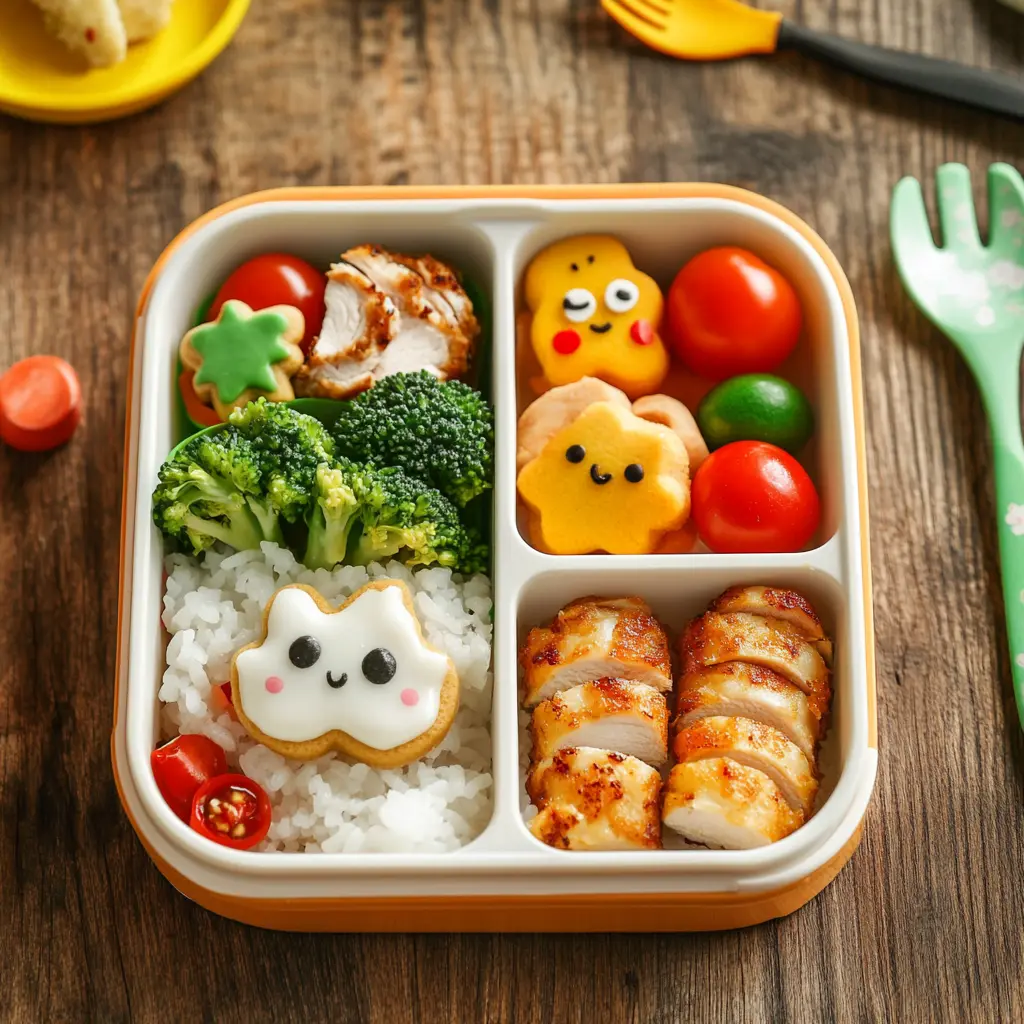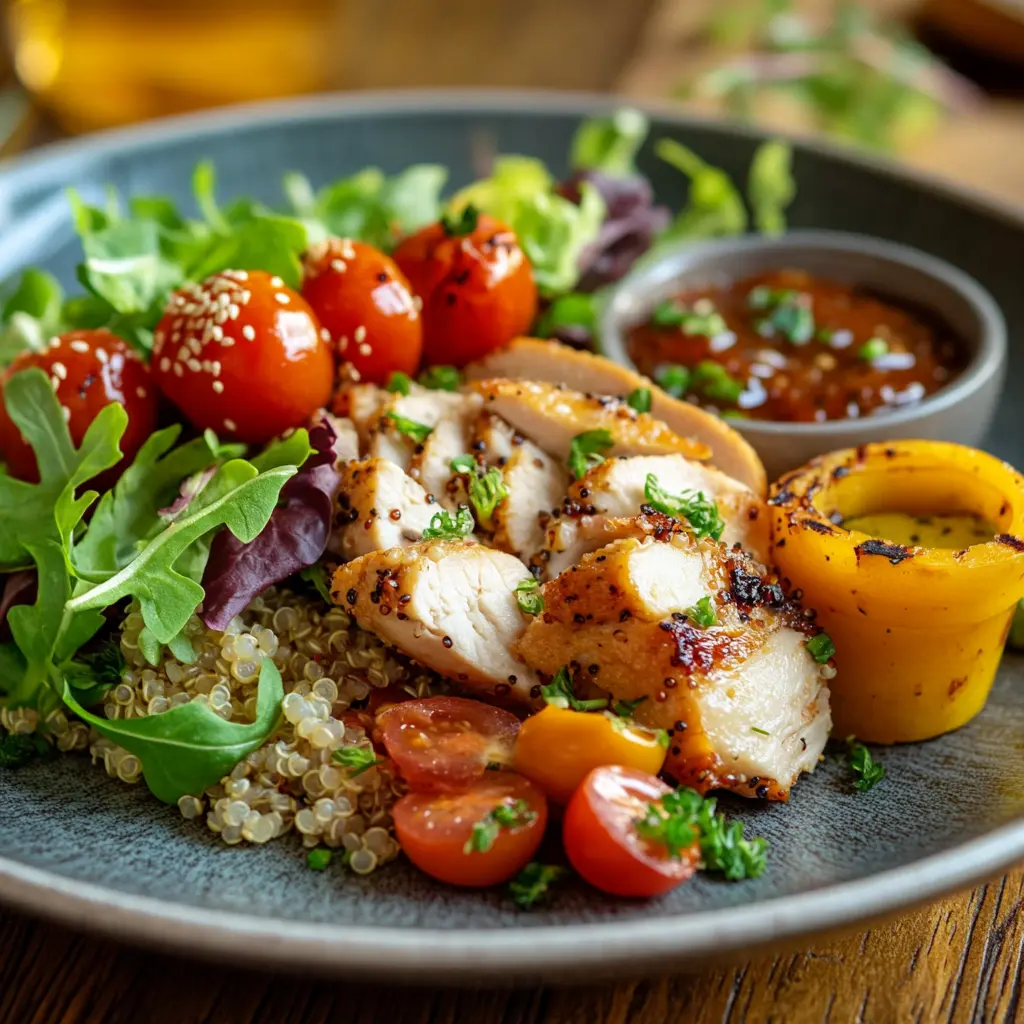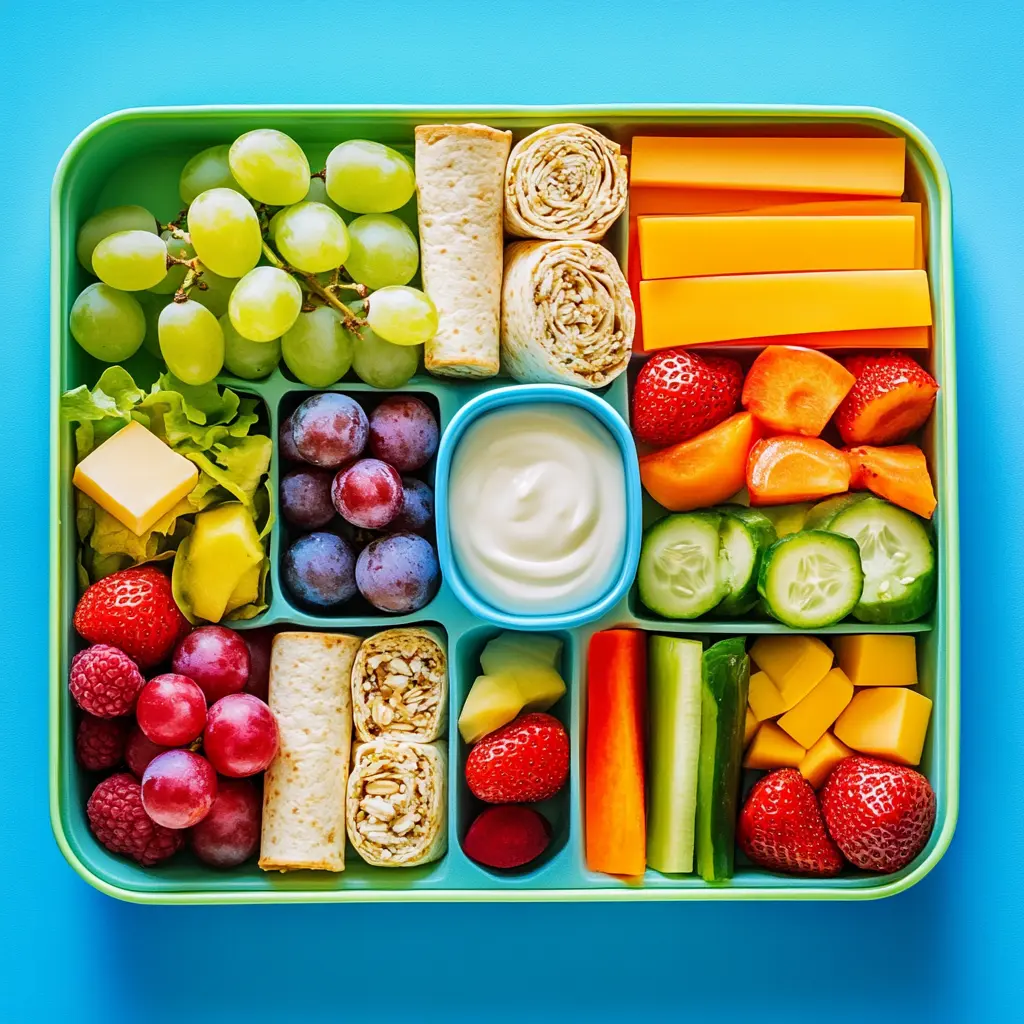Providing healthy and exciting lunches for kids can often feel like a juggling act, especially for busy parents. Between finding the time to prepare meals and making sure they’re both nutritious and appealing, it’s no wonder parents are always on the hunt for fresh inspiration. This article is here to take the guesswork out of meal prep, offering a treasure trove of practical ideas and helpful tips to keep your little ones happy and full of energy throughout the day.
Part 1: Introduction
Why Lunch Ideas for Kids Matter
Lunchtime is more than just a midday meal; it’s a critical moment for kids to refuel their growing bodies and recharge their minds. Providing balanced, delicious, and fun lunches sets the stage for healthier eating habits that can last a lifetime. Moreover, well-planned meals can enhance their focus and energy levels at school, making it easier for them to stay sharp and productive.
Building Healthy Eating Habits Early
Teaching children to enjoy wholesome foods starts with exposure. Incorporating fruits, vegetables, lean proteins, and whole grains into their daily meals encourages them to see these as normal and tasty choices. The earlier you start, the easier it is to instill these habits naturally.
Challenges Parents Face
Many parents struggle with limited time, budget constraints, and sometimes even picky eaters. However, with a bit of creativity and preparation, these hurdles are easier to overcome than they might seem. From make-ahead meals to simple hacks that make food fun, there’s always a way to keep things exciting.
How This Guide Can Help
This comprehensive guide will walk you through practical and imaginative lunch ideas for kids, from quick and easy meals to more specialized options for those with dietary restrictions. By the end, you’ll feel empowered to pack lunches your kids can’t wait to devour.
Part 2: Healthy and Nutritious Lunch Ideas for Kids
Why Healthy Lunches Matter
When kids consume balanced meals, their bodies thrive. Nutrients like proteins, fiber, and vitamins are essential for their growth and brain development. A well-thought-out lunch ensures they stay energized and ready to tackle the rest of their day. But what makes a lunch healthy? It’s all about combining wholesome ingredients in creative ways to satisfy both their nutritional needs and taste buds.
Easy and Quick Lunch Ideas for Busy Parents
For parents juggling a thousand tasks, quick and easy recipes can be lifesavers. With just a few ingredients and minimal prep, you can whip up meals that are both delicious and packed with nutrients.
Sandwich Alternatives for Kids
Sure, sandwiches are a classic, but why not switch things up?
- Wraps and pinwheels: Use whole-grain tortillas to create wraps stuffed with turkey, avocado, or hummus and colorful veggies. Slice them into pinwheels for a bite-sized treat.
- Lettuce wraps: Crisp lettuce leaves make an excellent low-carb base for fillings like shredded chicken or beans.
Nutritious Pasta and Rice-Based Lunches
- Veggie-packed pasta salads: Toss whole-grain pasta with cherry tomatoes, cucumbers, and a drizzle of olive oil. Add a sprinkle of parmesan for extra flavor.
- Chicken fried rice: A quick stir-fry of brown rice, diced chicken, peas, and carrots creates a hearty and satisfying meal.
Bento Box Lunches for Kids
Bento boxes are a parent’s best friend when it comes to variety.
- Combine lean proteins like grilled chicken slices, cheese cubes, or boiled eggs with fresh fruits and veggies.
- Add fun elements like yogurt dips or small whole-grain crackers to keep things interesting.

Creative Lunch Ideas That Kids Will Love
Fun Shapes and Themes
Sometimes, a little creativity can make a big difference.
- Use cookie cutters to turn sandwiches, fruits, or even cheese slices into playful shapes like stars, animals, or hearts.
- Create themed lunches around your child’s favorite characters or hobbies—think a “rainbow lunch” with fruits and veggies in every color.
Incorporating Favorite Foods
Balancing nutrition with fun doesn’t have to mean compromise.
- Mini whole-grain pizzas topped with tomato sauce, mozzarella, and diced veggies are always a hit.
- Taco bowls made with lean ground meat or beans and colorful toppings like corn, salsa, and shredded cheese offer both fun and flavor.
Let these ideas inspire you to think outside the box while still delivering meals that pack a nutritional punch. Whether it’s fun shapes or a bento box bursting with variety, there’s something here for every kid to enjoy!
Part 3: Special Lunch Ideas for Kids with Dietary Restrictions
Gluten-Free Lunch Ideas for Kids
For children who require gluten-free meals, there are plenty of exciting options that don’t compromise on taste or nutrition. With the availability of gluten-free substitutes and naturally gluten-free ingredients, crafting enjoyable lunches is easier than ever.
- Rice bowls with flair: Use brown or jasmine rice as the base and top it with grilled chicken, sautéed vegetables, or black beans and corn. Drizzle with a gluten-free dressing for extra flavor.
- Quinoa salads: This protein-rich grain is a fantastic gluten-free alternative. Toss it with cherry tomatoes, cucumbers, and feta cheese for a refreshing salad.
- Gluten-free wraps: Many brands now offer gluten-free tortillas that hold up just as well as traditional ones. Stuff them with turkey, spinach, and hummus for a nutritious wrap.
- Veggie-stuffed baked potatoes: A baked sweet or russet potato topped with steamed broccoli, shredded cheese, or even leftover chili can make a hearty, gluten-free option.

Dairy-Free Options for Kids
Lactose intolerance or a dairy-free lifestyle doesn’t mean boring lunches! There are countless substitutes and naturally dairy-free foods to keep things interesting.
- Pasta with marinara sauce: Skip the cheese and use whole-grain pasta with a robust tomato-based sauce. Add in lean protein like turkey meatballs or chickpeas for a protein boost.
- Veggie-packed soups: Use a thermos to send a warm soup, like a dairy-free butternut squash soup or chicken noodle. These options are comforting and nutritious.
- Hummus and veggie dippers: Pair creamy hummus with carrots, celery, and bell peppers for a crunchy, satisfying lunch. Add some whole-grain crackers to round it out.
- Turkey and avocado lettuce wraps: These are fresh, filling, and naturally free from dairy. Wrap slices of turkey and creamy avocado in a large leaf of romaine or butter lettuce.
Lunch Ideas for Picky Eaters
Picky eaters can be a challenge, but with a little creativity, even the fussiest kids will find something to love.
- Deconstructed meals: Instead of mixing everything together, present the elements separately. For example, offer plain pasta, shredded cheese, and marinara sauce on the side so they can mix as they please.
- Sneak in veggies: Puree vegetables like carrots, spinach, or butternut squash and mix them into sauces, soups, or even muffin batter.
- Make it interactive: Kids love meals they can build themselves. Try sending DIY tacos with small containers of tortillas, shredded chicken, lettuce, and salsa. Or pack their favorite crackers with small slices of cheese and turkey for a homemade lunchable.
- Fruit skewers: Stack colorful fruits like grapes, strawberries, and pineapple onto kid-safe skewers for a fun and sweet treat that’s hard to resist.
Allergy-Friendly Lunch Options
When crafting meals for kids with allergies, ensuring safety is just as important as taste. Allergies to peanuts, tree nuts, soy, or eggs can complicate meal planning, but there are plenty of alternatives.
- Nut-free energy balls: Use sunflower seed butter instead of peanut butter to make protein-packed energy balls with oats, honey, and raisins.
- Soy-free stir-fry: Prepare a quick stir-fry using coconut aminos as a substitute for soy sauce. Add chicken, vegetables, and rice for a complete meal.
- Egg-free pasta salads: Toss pasta with olive oil, roasted veggies, and grilled chicken for a hearty, allergy-friendly dish.
- Seed butter and banana sandwiches: Sunflower or pumpkin seed butter pairs perfectly with banana slices for a nut-free twist on a classic lunch idea.
Simple Swaps for Better Nutrition
Incorporating healthier swaps into your kids’ lunches can make a big difference in their overall diet, especially for those with dietary restrictions.
- Use whole-grain bread instead of white bread for added fiber.
- Replace chips with air-popped popcorn or roasted chickpeas for a crunchy snack that’s full of nutrients.
- Choose unsweetened applesauce or fresh fruit over sugary desserts.
Planning Ahead for Success
One of the best ways to ensure you’re prepared to meet dietary restrictions is by planning ahead.
- Batch cooking and freezing: Prepare larger quantities of kid-friendly meals like turkey meatballs, gluten-free muffins, or veggie-packed soups. Freeze portions for quick lunches during busy weeks.
- Meal prepping with variety: Use divided containers to portion out meals in advance. Include a balance of proteins, carbs, and fruits or veggies for a complete meal.
- Labeling containers: If multiple family members have different dietary needs, label each container clearly to avoid mix-ups.
Making Special Lunches Fun
Even when dealing with restrictions, presentation matters.
- Use colorful lunchboxes and fun utensils to brighten their meal.
- Include a small note or sticker for a personal touch that can brighten their day.
- Experiment with food shapes using cookie cutters for sandwiches, fruits, or cheese slices.
Special dietary needs don’t have to mean boring or limited lunches. With a little imagination, you can create meals that cater to every child’s specific requirements while still being delicious, healthy, and most importantly, enjoyable!
Part 4: Tips for Packing and Presenting Lunches
Essential Tips for Packing Healthy Lunches
The way a lunch is packed can make all the difference in ensuring it stays fresh and appealing by the time kids open their lunchboxes. With a few smart packing strategies, you can ensure the meals you prepare remain flavorful, safe, and ready to eat.
- Choose the right containers: Opt for reusable, BPA-free containers with compartments. They’re perfect for keeping foods separated and preventing sogginess. Bento boxes are a popular choice as they allow you to portion meals neatly.
- Keep it cool: If packing perishable items like yogurt, cheese, or sliced fruit, include an ice pack or frozen juice box to maintain a safe temperature. This step is especially important for dairy or protein-based items.
- Invest in a thermos: A thermos keeps hot foods like soup, chili, or pasta warm until lunchtime. Preheat the thermos with boiling water for a few minutes before adding the food to keep it warmer longer.
- Avoid single-use plastics: In addition to being eco-friendly, using reusable containers or silicone snack bags can help save money in the long run.
How to Make Lunches More Appealing for Kids
Kids are more likely to eat and enjoy their lunches when they look appetizing and fun. Adding small touches of creativity can transform even the simplest meal into something exciting.
- Use vibrant colors: Fill lunchboxes with a rainbow of fruits and veggies, like carrot sticks, cherry tomatoes, blueberries, and snap peas. The bright hues not only look appealing but also signal a variety of nutrients.
- Experiment with textures: Mix crunchy elements like crackers or celery sticks with softer foods like hummus or apple slices. This keeps the meal engaging for kids who enjoy variety.
- Make food interactive: Pack foods that kids can assemble themselves. For example, include tortillas, chicken, shredded lettuce, and salsa for DIY tacos. It turns lunch into an activity!
- Surprise them with notes or treats: A handwritten note or a small sticker in their lunchbox can brighten their day. Adding a small, healthier treat, like a dark chocolate square or a homemade granola bar, makes the meal feel special.
Meal Prep Hacks for Time-Saving Parents
For busy families, meal prep is a lifesaver. Taking a few extra minutes to plan ahead can save you significant time and stress during the week.
- Prep ahead in batches: Wash, chop, and portion fruits and vegetables at the beginning of the week. Store them in airtight containers, so they’re ready to grab and pack.
- Create a rotating menu: Design a weekly lunch plan to avoid decision fatigue. For example, Monday could be wrap day, Tuesday pasta, and Wednesday bento box. This method adds variety without overloading you with decisions.
- Assemble leftovers creatively: Repurpose dinner leftovers into kid-friendly lunches. For example, last night’s grilled chicken can become today’s chicken quesadilla or rice bowl.
- Freeze essentials: Stock your freezer with homemade options like whole-grain muffins, veggie fritters, or meatballs that can be quickly reheated and packed.
Smart Snack and Side Dish Ideas
A well-rounded lunch isn’t just about the main course. Adding sides and snacks can provide extra nutrients and keep kids feeling full longer.
- Fresh fruit options: Opt for portable options like apple slices, grapes, or mandarin oranges. Use lemon juice on apple slices to prevent browning.
- Veggie snacks: Carrot sticks, cucumber slices, or cherry tomatoes paired with a small container of ranch or hummus make for a nutritious addition.
- Whole-grain crackers or breadsticks: These pair perfectly with cheese cubes or seed butter for added protein.
- Homemade trail mix: Create your mix with unsweetened dried fruit, seeds, and a handful of whole-grain cereal.
Avoid Common Packing Pitfalls
- Don’t overpack: Large portions can overwhelm younger kids. Aim for smaller servings of a variety of foods instead.
- Avoid overly messy foods: While spaghetti might be a favorite at home, it’s not the easiest thing for kids to eat at school.
- Check for allergies: Be mindful of classroom rules regarding allergens like nuts. Ensure the lunches you pack are safe for shared spaces.
Why Presentation Matters
Presentation can turn a standard lunch into something exciting. Kids are more likely to dig in when the meal looks fun and inviting.
- Use food picks to secure small items like mini sandwiches or fruit chunks.
- Create “faces” on sandwiches using cut-out veggies or cheese.
- Rotate themes weekly, like a “picnic lunch” with finger foods or an “international lunch” featuring global flavors like sushi rolls or mini quesadillas.
Packing lunches doesn’t have to be a chore. With these tips and tricks, you can create meals that your kids will eagerly anticipate, all while keeping things practical and stress-free for you. A little thoughtfulness goes a long way in making lunchtime the highlight of their school day!
FAQs
What are some good kid lunches?
Good kid lunches balance nutrition and fun while catering to their preferences. Some great options include:
- Whole-grain wraps with turkey, spinach, and cream cheese.
- Bento boxes featuring grilled chicken, fresh fruits, and a side of hummus.
- DIY tacos with small tortillas, shredded chicken, cheese, and salsa.
- Veggie pasta salad made with whole-grain noodles and a simple vinaigrette.
- Mini quesadillas paired with guacamole and carrot sticks.
Adding a mix of protein, fruits, and whole grains keeps kids satisfied and energized throughout the day.
What to put in kids’ lunch besides sandwiches?
Tired of the sandwich routine? There are plenty of alternatives that are just as tasty and portable:
- Pasta or rice bowls with lean protein and veggies.
- Veggie-packed soups stored in a thermos.
- Yogurt parfaits with granola and fresh berries.
- Egg muffins or frittatas loaded with chopped veggies and cheese.
- Snack plates featuring cheese cubes, crackers, and fresh fruit.
These options keep lunches fresh, exciting, and full of variety.
What are 10 healthy lunches?
Here’s a quick list of ten healthy and kid-approved lunches:
- Chicken and veggie stir-fry with brown rice.
- Turkey and avocado pinwheels.
- Mini whole-wheat pizzas topped with tomato sauce and veggies.
- Lentil soup with a whole-grain roll.
- Quinoa salad with black beans, corn, and a lime vinaigrette.
- Greek yogurt with granola, fresh fruit, and a small handful of nuts.
- Veggie wraps with hummus and shredded carrots.
- Grilled chicken slices with a side of mashed sweet potatoes.
- Homemade veggie sushi rolls.
- Apple slices with almond butter and cheese cubes.
These meals combine essential nutrients like protein, fiber, and healthy fats to keep kids fueled and focused.
What can a 12-year-old make for lunch?
A 12-year-old can prepare plenty of simple, delicious lunches with minimal supervision. Here are some kid-friendly options they can make on their own:
- Peanut butter and banana wraps.
- Personal-sized pita pizzas with tomato sauce and shredded cheese.
- Veggie quesadillas using a stovetop or microwave.
- Tuna salad served with whole-grain crackers or cucumber slices.
- Smoothie bowls topped with granola and fresh fruit.
Encouraging kids to participate in making their meals not only fosters independence but also teaches them valuable life skills.
Conclusion
Crafting the perfect lunch ideas for kids doesn’t have to be daunting. With a balance of creativity, preparation, and a focus on nutrition, you can create meals that are as enjoyable to eat as they are beneficial for their growing bodies and active minds.
Whether it’s a colorful bento box, a quick wrap, or a warm bowl of pasta, variety and presentation can make all the difference in keeping kids excited about lunchtime. By incorporating wholesome ingredients, addressing dietary needs, and adding a touch of fun, you’re setting your child up for a healthy and happy day.
With these strategies and ideas, lunchtime can become an opportunity to nurture your child’s health and spark joy in their daily routine. So, roll up your sleeves, embrace the possibilities, and get ready to pack lunches that both you and your kids will love!

